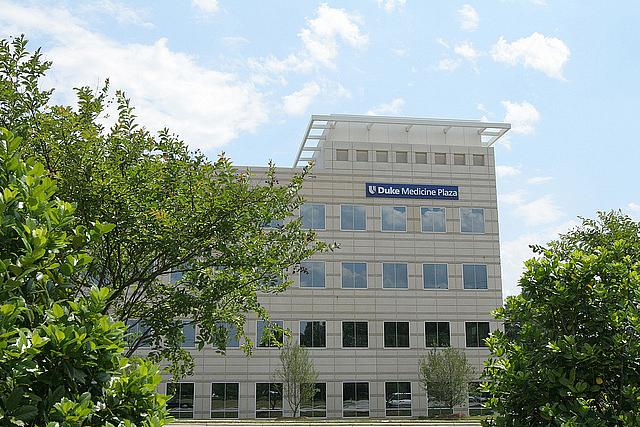Q&A with Steve Riley: Following a Tip to the Bottom of the Health Cost Iceberg

Steve Riley is senior editor for investigations at The News & Observer in Raleigh, North Carolina. A journalism veteran of more than 30 years, Riley has earned many awards, including the National Headliner award. He oversaw the paper’s coverage of Hurricane Floyd, which was a finalist for a Pulitzer Prize. Most recently, he led a team of reporters from his paper and from The Observer in Charlotte, North Carolina, that won a Barlett and Steele Award for Business Investigative Reporting.
The Prognosis: Profits series examined how North Carolina’s nonprofit hospitals are nonprofit in name but for-profit in practice, driving up health care costs and wrecking their patients’ finances. I shared some tips from the series last month. I asked him some questions about the series over email, and he was kind enough to respond. The first part of the interview is below. The second part will appear on Friday.
Q: Every town has a mix of for-profit and nonprofit hospitals, and, to the casual observer, they usually are indistinguishable. What told you that there was a story here and what were the initial steps of the team in pursuing that story?

A: Our first interest in this was sparked as far back as 2008. One of our reporters had a tipster who was telling him about some pretty remarkable profits in the hospital industry. We had done an initial sniff, looking at some of the available information, and it looked promising, but everybody had something else to do, and it took a while to get going.
We got interested again during the health care debate in 2009, when most of the attention was directed at doctors and health care insurers. It looked to us as if hospitals represented a pretty big cost center that was getting less attention, so Joe Neff started another round of document searching and reading. He spent a lot of time looking at cost-to-charge ratios and financial statements, and he and database editor David Raynor did some initial work in a state courts database. It showed that a Charlotte hospital system was suing thousands of patients each year, which got our attention.
That’s when I first went to our friends at The Charlotte Observer to see if they’d be interested in working this together. They were.
There were a lot of starts and stops going forward from there, with Joe and Ames Alexander getting taken off for other, more pressing, investigative work. But we kept plugging away, knowing that we’d get back to the story, and Charlotte later added medical reporter Karen Garloch to the project.
I should note that nearly all the hospitals in North Carolina are nonprofits, so the question of for-profits vs. nonprofits never became much of an issue for us. The issue was nonprofit hospitals acting from a very aggressive business model, despite all the advantages they are granted because of their nonprofit status.
Q: How was the collaboration between the two papers managed?
In late 2009/early 2010, we agreed to work together on this story. It wasn’t a difficult decision, because we’re both owned by McClatchy and we’ve been sharing stories and resources for several years now. For instance, the sports staffs are merged and share nearly everything. Charlotte has run a good bit of our state government coverage, and we’ve both run each other’s projects.
But we have separate project teams, and this was the first time we had worked jointly on an investigative project. So Jim Walser, projects editor in Charlotte, and I talked regularly, and we started having regular meetings with the reporters, nearly weekly on the phone and every few months in person in Greensboro. That’s roughly halfway between Charlotte and Raleigh.
The reporters started circulating their findings to all other members of the group, sending each other their interviews. We had pretty regular discussions about the direction of the reporting. The reporters were good about writing regular memos along the way, and later trying to craft some budget lines that outlined the project. We wanted to know if our story lines were holding up, what the scope of the project would be, those kinds of things.
Q: When the reporting started to get underway, what were some of the findings that surprised you initially?
One of the first things we wanted to know was how much money the hospitals were making, what kind of reserves they had built up, and how they were spending what they had. Second, we wanted to know what kind of service they were giving back to the community, particularly in the area of charity care. Third, we looked for ways to put a value on all the tax breaks the nonprofit hospitals were getting. Ames was key in arriving at some benchmarks for whether it looked like there would be stories in those areas.
As for surprises, we were surprised at the number of lawsuits the hospitals in the Charlotte area were filing, many against pretty poor patients. In our area, the hospitals were not suing, but were sending people with unpaid bills to collection agencies. Either way, it’s pretty rough stuff from nonprofits that get pretty big tax advantages. We also were surprised at some of the salaries hospital officials were being paid (Twenty-five in the state made more than $1 million annually.)
Q: Were there records that proved particularly useful in building this investigation?
Bond disclosure documents, for financial information and other details.
IRS Form 990s (the returns filed by nonprofits) for information about executive compensation and other financial info.
Lawsuits filed by hospitals against patients.
Medicare cost report data compiled by the American Hospital Directory.
Figures on charity care spending for each N.C. hospital compiled by the N.C. Hospital Association.
Campaign finance reports.
Consolidated financial statements of hospitals.
Consumer complaints to the state Attorney General, Department of Insurance and Better Business Bureau.
Q: Were there records that you tried to review but were blocked in some way?
We wanted more detailed financial information about some of the hospitals we were writing about. For example, we could never get information about how much of a given hospital system’s overall budget was spent on overhead.
Related Posts:
Cheesecake Medicine: Tips from the Prognosis: Profits Investigative Series
Cheesecake Medicine: More Tips from Prognosis: Profits Investigative Series on Hospital Profits
Beat the Clock: Planning a Big Journalism Project While Doing All Your Other Work
Beat the Clock: Put Your Calendar to Work While Reporting Your Project
Photo credit: North Hills vis Flickr
